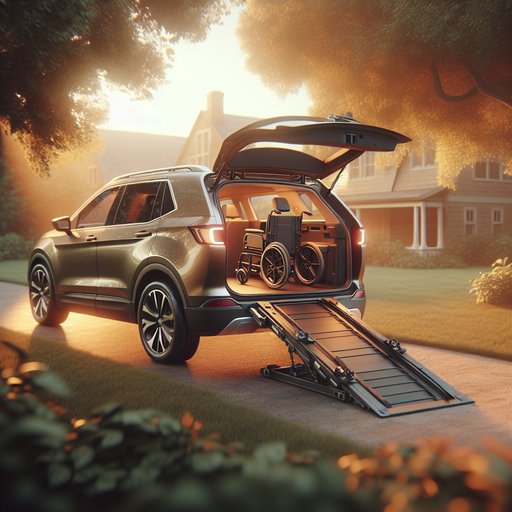
We spent a week measuring and living with a 2025 Subaru Forester (Premium, AWD) to assess accessibility basics: door apertures, sill and seat heights, boot lift‑over, and how well it works with portable ramps for mobility devices.
Our test car is the latest Forester with standard AWD, CVT, and 8.7 inches of ground clearance on 17-inch wheels. Not a lowered crossover, but known for upright packaging and square openings. We focused on day-to-day usability for older drivers and mobility-aid users rather than off-road prowess. Measurements were taken on level pavement with a tape and digital inclinometer, tires at placard pressure, and a 75 kg driver on board to reflect real curb stance.
We brought a folding 6- and 8-foot suitcase ramp and a 45 kg travel scooter to validate loading claims. Front door apertures measure 39.5 in wide by 43.0 in tall; rears are 38.2 x 41.5 in. Front doors open to roughly 72°, rears to ~70°, leaving generous swing for carers to assist. The exterior step-in (ground to door sill) is 17.3 in.
Front seat base height (uncompressed cushion, lowest adjust) is 26.8 in; rear bench is 27.5 in. That “chair-height” seating suits most users who struggle to drop down into sedans or climb up into taller SUVs. The B-pillar grab handle and broad sill-to-seat glide path make pivot-and-plop transfers straightforward. Sill width is modest (about 2.3 in of painted scuff plate) and flush with the weatherstrip, so walkers don’t snag feet.
Cushion bolsters are mild, easing lateral transfers from a wheelchair. The tilt/telescopic wheel has ample range, letting drivers slide in without knee clash. One caveat: the driver’s door lacks an overhead grab handle, so some may rely on the steering wheel or A-pillar; passengers get handles at all positions. Floor mats sit flat at the tunnel, minimizing trip points.
At the rear, the cargo floor sits 28.0 in off the ground with a minimal 0.6 in lift-over lip; the opening is 40.5 in high (floor to hatch), 45.0 in wide at its narrowest. This flat deck is great for sliding in folded chairs and walkers. Ramp use: with a 28 in rise, ADA’s 1:12 occupied-chair guideline implies a 28 ft ramp—impractical for a non-converted SUV. Our 8 ft ramp yields ~19° (~1:3) and the 6 ft ramp ~25°, suitable only for loading an unoccupied scooter or chair with assistance.
A top-plate bridge is needed to clear the small lip without catching caster wheels. Tie-down loops in the cargo bay are helpful for securing devices; the 8 ft folding ramp stores diagonally with the rear seats up. Overall, the Forester is excellent for ambulatory users and those transferring from a wheelchair: wide doorways, chair-height seats, low lift-over, and friendly ergonomics. It’s not ideal for occupied wheelchair ramp entry without a professional conversion; for that, a minivan-based lowered-floor solution remains best.
If you’re shopping, prioritize the power tailgate, seat memory (for repeat transfer positions), and all-weather scuff protection. For mobility devices under 60 kg, a short portable ramp plus a winch/hoist or hitch carrier is the most manageable setup with this vehicle.












